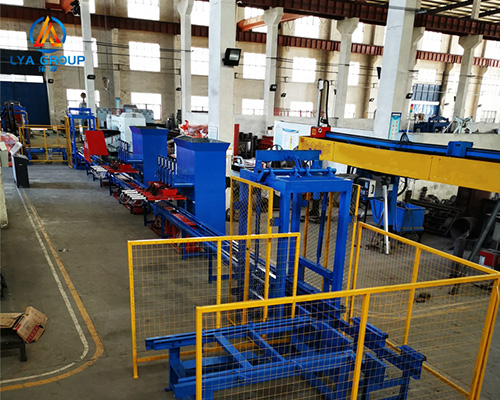Veneer stone production line
News 2023年8月10日 127

A veneer stone production line refers to a series of machines and processes used for the mass production of artificial or cultured stone veneer. Veneer stone is a thin layer of stone material that is designed to mimic the appearance of natural stone. It is commonly used in construction for decorative purposes such as cladding walls, fireplace surrounds, and accent features. A typical veneer stone production line includes the following components and processes:
1.Raw Material Preparation: The raw materials used for veneer stone production typically include Portland cement, aggregates (such as sand or crushed stone), pigments, and additives. These materials are accurately measured and mixed in a batching plant or mixing equipment to create a homogenous mixture.
2.Mold Preparation: Veneer stone molds, which are typically made from materials like silicone or polyurethane, are prepared for the casting process. The molds are cleaned, inspected for any damages, and coated with a release agent to ensure easy removal of the cast veneer stones.
3.Casting Process: The mixed concrete or stone veneer material is poured or pressed into the molds. The molds are often vibrated or compacted to ensure the material fills all the intricate details and textures of the mold, resulting in a realistic stone appearance. The casting process can be done manually or with the help of automated machinery, depending on the scale of production and level of automation.
4.Curing and Drying: After the veneer stone material is cast into the molds, it undergoes a curing process to gain strength and durability. Curing can be achieved through natural curing (air drying) or accelerated curing methods such as steam curing or using curing chambers. The cured veneer stones are then dried further to remove excess moisture before further processing.
5.Trimming and Finishing: Once the veneer stones are fully cured and dried, they are removed from the molds and undergo trimming and finishing processes. Trimming involves removing any excess material or imperfections from the edges or surfaces of the stones. Finishing techniques such as sanding or polishing may be applied to enhance the appearance and texture of the stones.
6.Quality Control: Throughout the production line, quality control measures are implemented to ensure that the veneer stones meet the desired standards and specifications. This may involve regular testing of the raw materials, monitoring the mixing and casting processes, and conducting strength and quality tests on the finished veneer stones.
7.Packaging and Distribution: The final step in the production line is the packaging and distribution of the veneer stones. The stones are typically packaged in crates or pallets to facilitate handling and transportation to construction sites or distribution centers.
It’s important to note that the specific design and configuration of a veneer stone production line can vary depending on factors such as production capacity, automation level, and the desired range of stone textures and designs. Advanced production lines may incorporate additional processes such as surface treatment, coloring or staining, and automated handling and packaging systems to optimize efficiency and productivity.